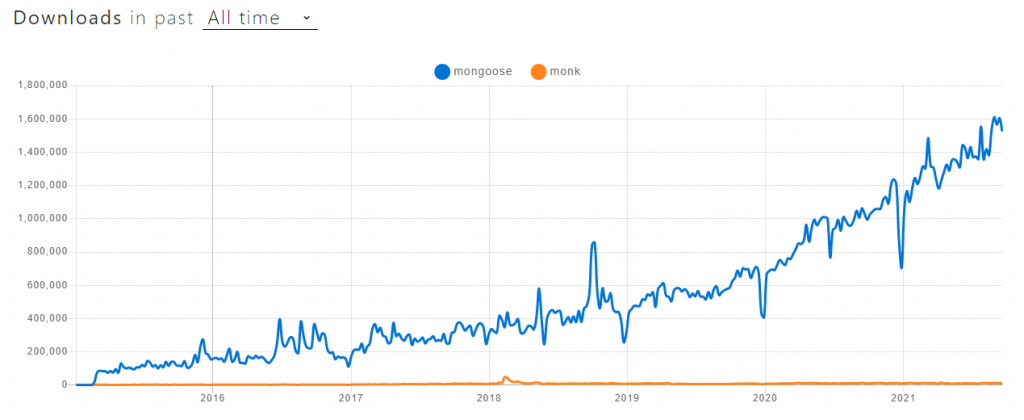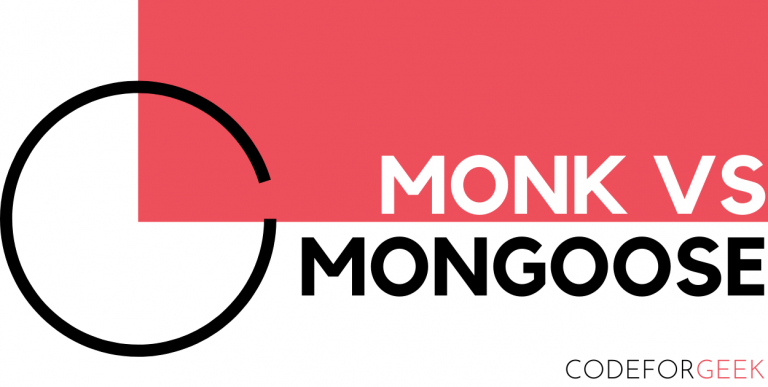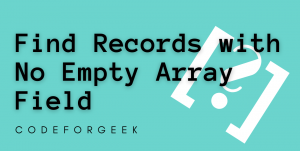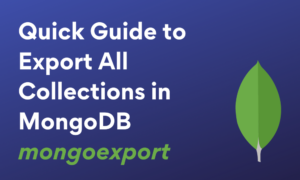In this tutorial, I will be walking you through a comparative guide on two popular ODMs, Monk vs Mongoose for MongoDB.
MongoDB is huge and has gained immense popularity as a robust database management system. Well, let’s face it, MongoDB gives a hard time to starters. The core components and the complex documentation have only been added to a list of drawbacks.
To make lives easier ODMs were introduced. Among these, there persists a long-lasting battle between Monk vs Mongoose. Both have gained immense popularity. Although the different approaches to solve the same problem, yet they differ. They also have different levels of scope and complexity.
In this guide, I will explain in detail, the core difference between Monk vs Mongoose for MongoDB and who should go about it. This article also aims to throw light on explaining what an ODM and a database management system are at their core. I will explain what MongoDB is as well.
So, let the Monk vs Mongoose battle begin!
Monk vs Mongoose for MongoDB: A Quick Overview
| Monk | Mongoose |
| For beginners | For intermediates |
| Simpler code and syntax | Slightly complex code |
| Low popularity | Extremely popular |
| Simple and primitive | Advanced and robust |
| Small documentation | Huge but simple documentation |
What is a Database Management System (DBMS)?
A DBMS is better understood if we first understand what a database is. A database refers to an organized collection of structured data that we normally store in a computer system. It allows to storage data that developers collect to ensure users have a better experience with the application or website.
Now, this database usually interacts with something known as a database management system (DBMS). This is what or where the users of that database control and/or manage data inside the database.
A DBMS is nothing but software or interface that allows complete control over the data such as creating, reading, editing, deleting, etc. It also facilitates access control systems to limit or facilitate access over selective data. It also provides other services like regular backups, reporting, storage, security, and more.
What is an Object Document Mapper (ODM)?
An ODM or an object document mapper is something that maps objects with a document-based or a NoSQL database like MongoDB. With an object document mapper in place, a developer can smoothly define a schema for documents inside collections. This makes it easier to understand and manage data.
It allows an individual to structure the documents stored inside a collection well for better representation of data. An ODM also enables users to add new properties and fields easily without touching other documents.
What is MongoDB?
MongoDB is a popular document-oriented database management system that allows developers to store mammoth amounts of data. It is open-source and very efficient. Although it is quite complex for beginners when learning without an ODM, it does have precise documentation. It is a NoSQL type database that is it stores data in BSON format as documents inside collections.
The MongoDB database management system is owned and managed by MongoDB Inc. It was founded in 2007 and was first launched in February 2009. The DBMS is currently managed under SSPL (Server-Side Public License).
Its multi-driver support for even the popular ones has enabled the database management system with immense popularity. It supports popular drivers or languages like Nodejs, PHP, Java, Python, Ruby Scala, C#, Perl, Swift, and more.
Top-tier like Facebook, Google, Adobe, Nokia, and many others have chosen MongoDB to store their huge amounts of data.
Monk vs Mongoose: Uncovering the Ultimate Differences
Now that we have discussed enough what an ODM is, what a database management system refers to, and a lot more, it is time to uncover the ultimate differences between Monk vs Mongoose for MongoDB.
As of now, the Monk vs Mongoose battle has subsided with experienced developers understanding the clear differences. However, it becomes challenging for beginners out there who have just started with backend and databases; especially MongoDB.
Let us get started with understanding the clear differences between Monk vs Mongoose and conclude what each one is good at.
Monk
Monk is generally recommended for beginners who have just started with the backend of applications and database management. It comes with simpler documentation and easily comprehensible syntax.
However, it only has a smaller scope and comes with lesser features when compared to Mongoose. Monk also features easier interoperability with modules. Connections and configuration for example with MongoDB are made easier and beginner-friendly.
Unfortunately, it is not as popular as Mongoose and not well documented either. It needs more advancements when compared to Mongoose. The documentation also requires more explanations and examples in depth. Lastly, the package receives updates later than Mongoose.
Mongoose

On the flip side, Mongoose has gained an immense amount of popularity. This is mainly because it is well documented and highly advanced. The NPM package receives frequent updates and upgrades.
However, it is mostly preferred by intermediates keeping in mind the complexity. But, in-depth and simplified documentation is what saves the day. The documentation also comprises a good number of examples that make it comprehensible for beginners as well.
Similar to Monk, connections, and configurations in Mongoose is faster and easier too.
Read More: Explaining the Ultimate Difference Between MongoDB vs Mongoose
Conclusion
This guide discusses an in-depth comparison between Monk vs Mongoose.





